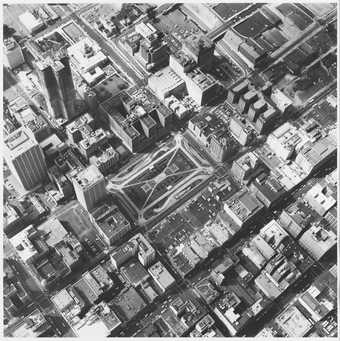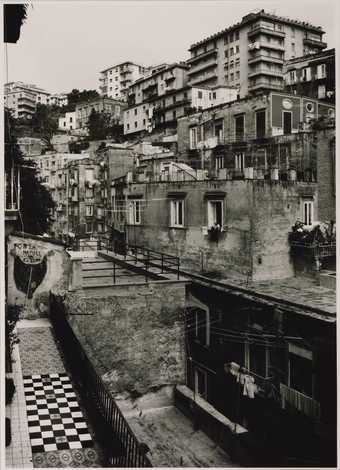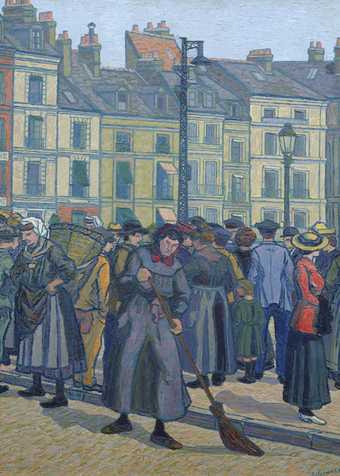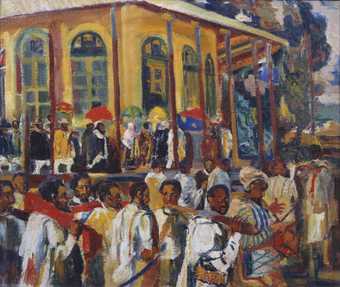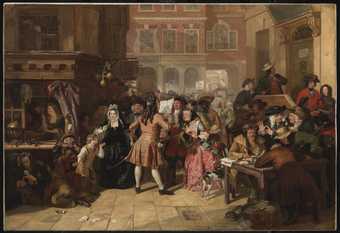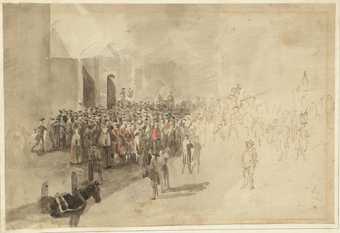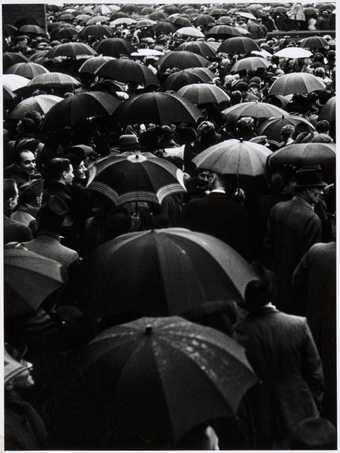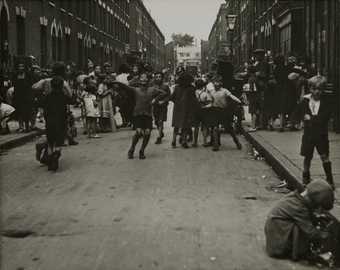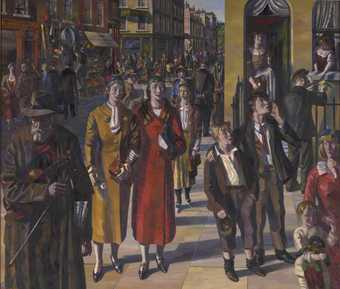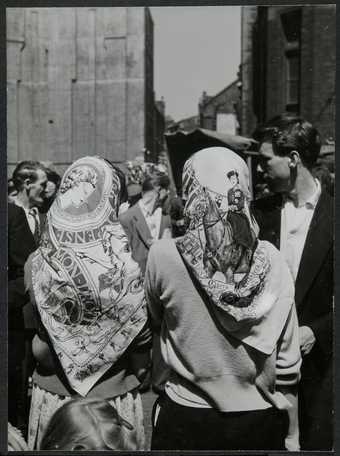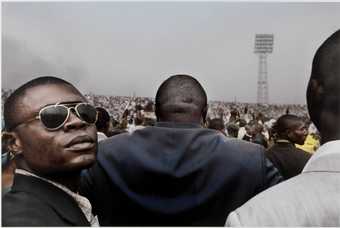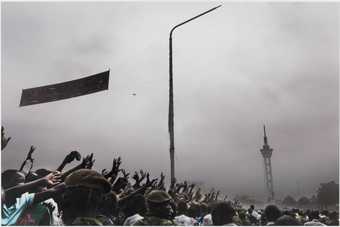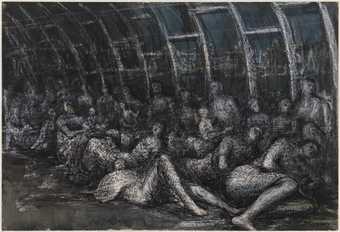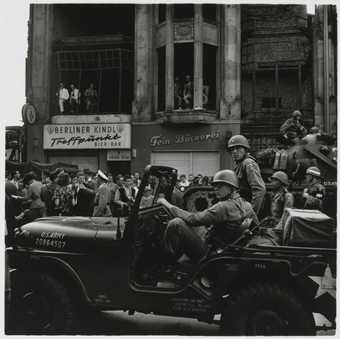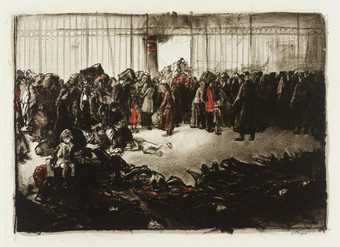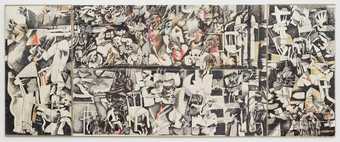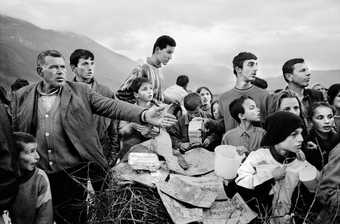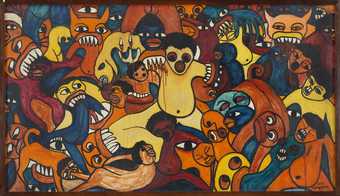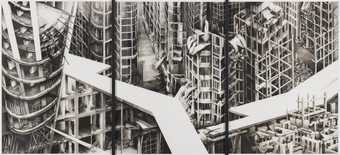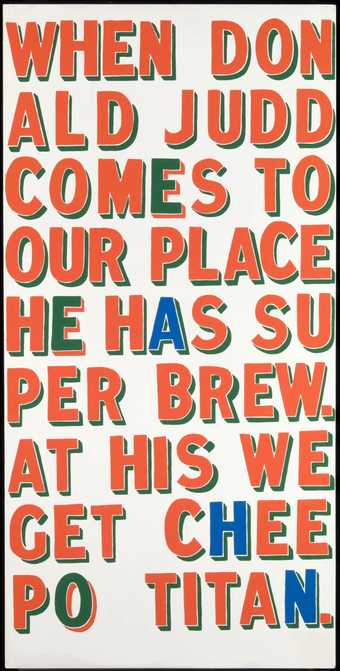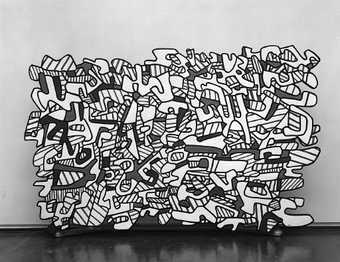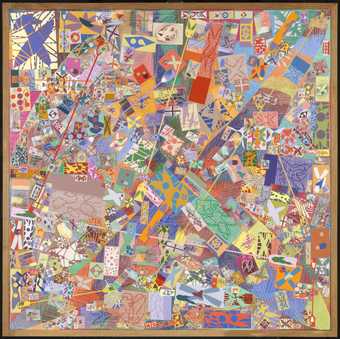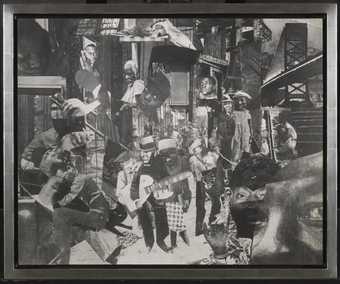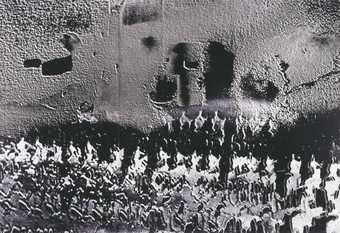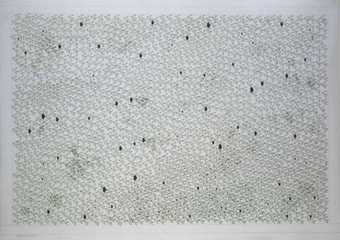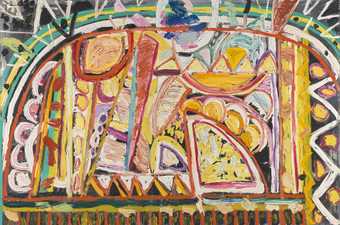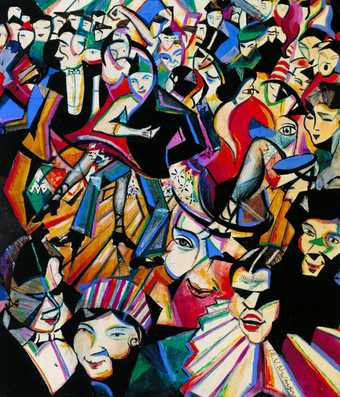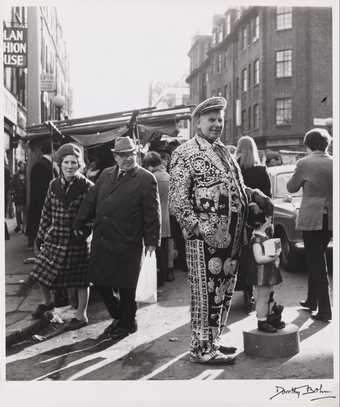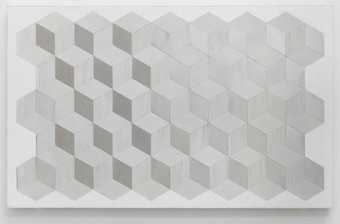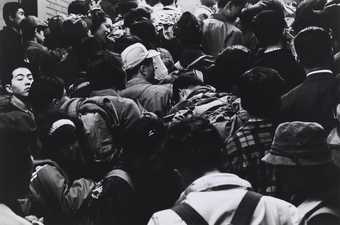
Yutaka Takanashi
Tokyo-jin
(1974, printed 2012)
Tate
Crowded Cities
We often think of cities as crowded places, with lots of people in a relatively small space. But in cities, the architecture can also make us feel hemmed in. When buildings are storeys high and you can’t see a wide horizon, we feel contained and maybe crowded.
Cities attract people for work and entertainment. When it became possible to build high-rise buildings safely, many architects thought this would be a solution to overcrowded streets and sprawling cities. Tower blocks sprang up in cities across the world. While they now shape our view of city life, they haven’t always been the cure they were planned to be.
Crowded buildings
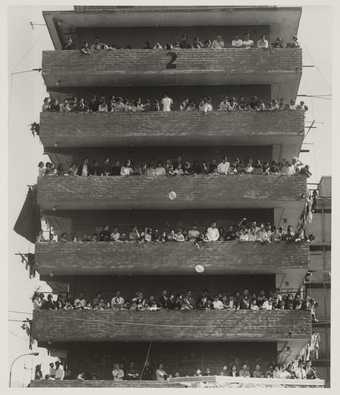
Yau Leung
Wong Tai Sin Resettlement Estate
(1965)
Tate
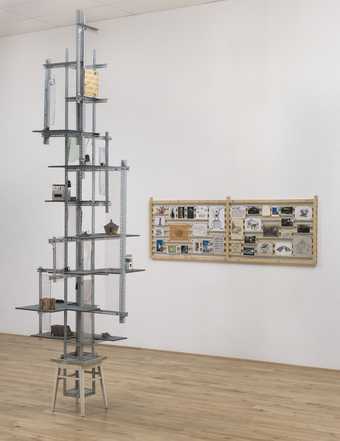
Tamás Kaszás
Shanty Tower
(2014)
Tate
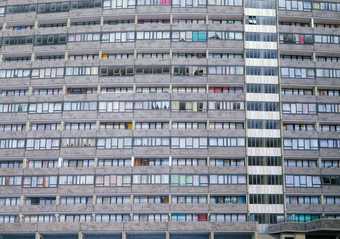
David Hepher
Albany Flats
(1977–9)
Tate
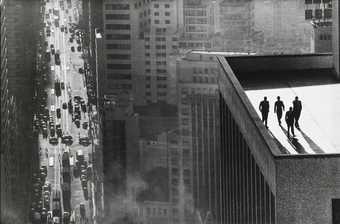
René Burri
Sao Paolo, Brazil, 1960
(1960, printed 2014)
Tate
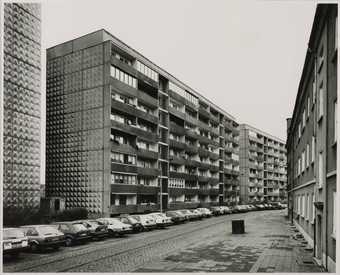
Thomas Struth
Ferdinand-von-Schill-Strasse, Dessau 1991
(1991)
Tate
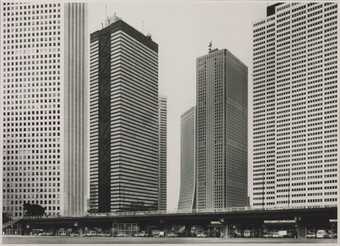
Thomas Struth
Shinju-ku (Skyscrapers), Tokyo 1986
(1986)
Tate

Julian Opie’s faceless office block sculptures are based on buildings of the 1960s. He said about them: 'I try to make objects that are both a drawing of some specific situation but also a symbol ...'
What do you think these buildings might be a symbol of?
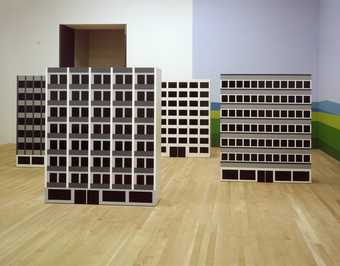
Julian Opie
You see an office building. 2
(1996)
Tate
Crowded spaces and places
Domestic spaces can often feel cramped or crowded. Do you ever feel that there’s not enough space for you to fit into? Do you want to spill out of your space and into others?

Tomoko Takahashi
Drawing Room
(1998)
Tate
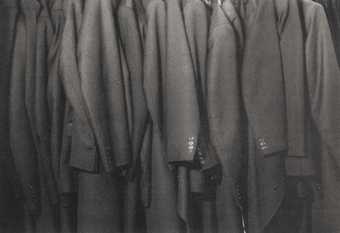
Paul Coldwell
[title not known]
(1998)
Tate
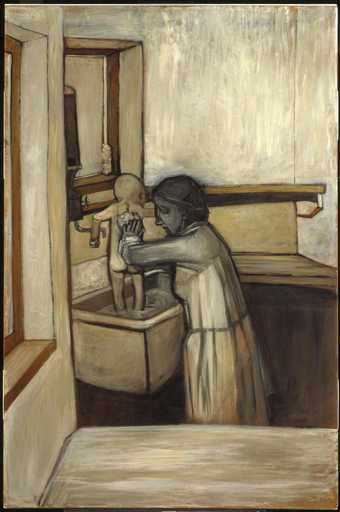
Jack Smith
Mother Bathing Child
(1953)
Tate
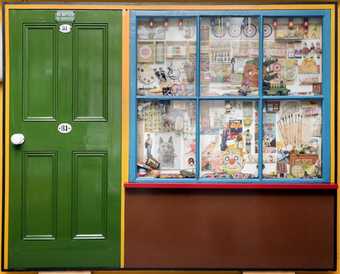
Peter Blake
The Toy Shop
(1962)
Tate
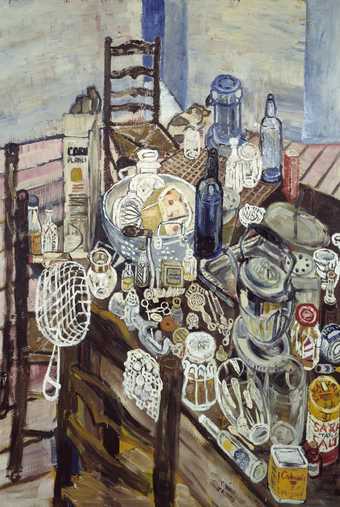
John Bratby
Still Life with Chip Frier
(1954)
Tate
© The estate of John Bratby. All Rights Reserved 2020 / Bridgeman Images
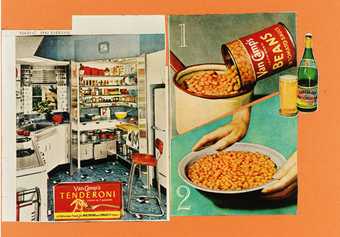
Sir Eduardo Paolozzi
11. Improved Beans
(1972)
Tate
Crowds
Big events in a city can draw crowds to an area to celebrate or commemorate. Painting or photographing a busy scene can capture the feelings of being crowded in a city, while also giving you a way to remain separate.
There can be loneliness in crowds too. In a big crowd, you’re more likely to blend in, or less likely to be noticed. Maybe you can get lost in a crowd, be anonymous, try out a new identity.
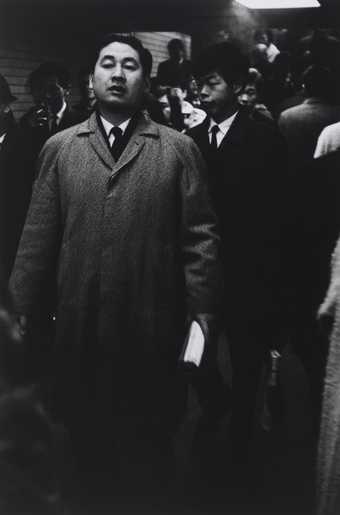
Yutaka Takanashi
Tokyo-jin
(1974, printed 2012)
Tate

Yutaka Takanashi
Tokyo-jin
(1974, printed 2012)
Tate
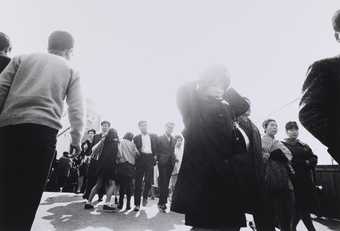
Yutaka Takanashi
Toshi-e
(1974, printed 2012)
Tate
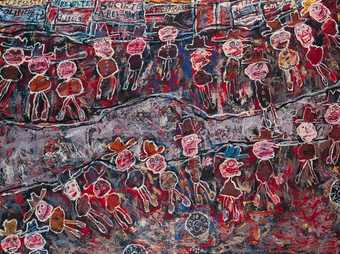
Jean Dubuffet
Spinning Round
(1961)
Tate
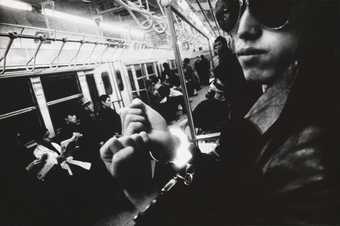
Daido Moriyama
Memory
(2012)
Tate
The market place
Crowded places can also be places of excitement and exchange. Markets, fairs and ports can become crowded for one day and suddenly be empty the next. These gatherings have fascinated artists for hundreds of years. Piles of produce and people everywhere give artists plenty of crowded subjects.
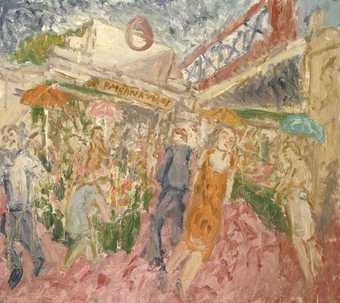
Leon Kossoff
The Flower and Fruit Stalls, Embankment 1995
(1995)
Tate
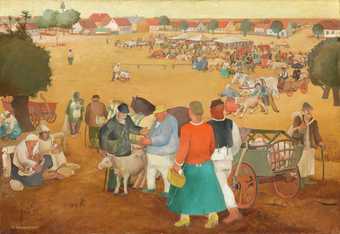
Krsto Hegedusic
A Fair at Koprivnica
(1930)
Tate
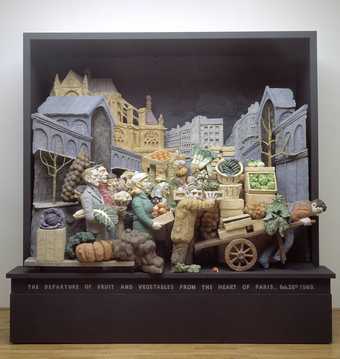
Raymond Mason
The Departure of Fruit and Vegetables from the Heart of Paris, 28 February 1969
(1969–71)
Tate

John Dodgson
Market Place
(1950s)
Tate

John Sell Cotman
Norwich Market-Place
(c.1809)
Tate
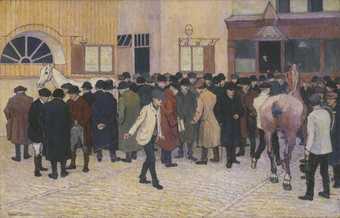
Robert Bevan
Horse Sale at the Barbican
(1912)
Tate
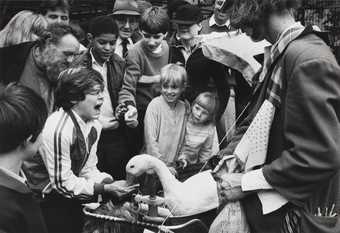
Markéta Luskačova
Children and goose, Covent Garden
(1984)
Tate
Crowded entertainments
Have you ever wanted to go somewhere fun, and then found when you got there it was too crowded to enjoy? Sir David Low made this comic drawing in 1925. It was a hard winter, and the White Stone Pond at Hampstead in London froze over. It was covered with skaters, trying to enjoy themselves. Low suggested this was a new traffic problem!
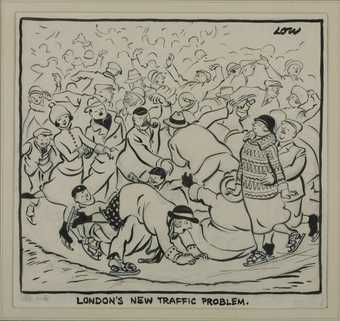
Sir David Low
London’s New Traffic Problem
(1925)
Tate
Many artists have found the crowds gathered at fairs, shows and even galleries inspiring...
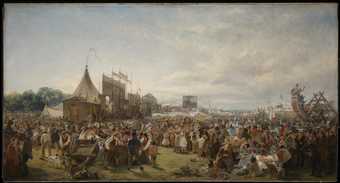
Erskine Nicol
Donnybrook Fair
(1859)
Tate
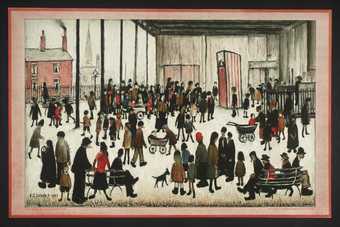
L.S. Lowry
Punch and Judy
(1943)
Tate
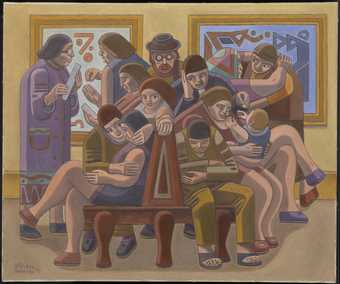
William Roberts
The Art Gallery
(1973)
Tate
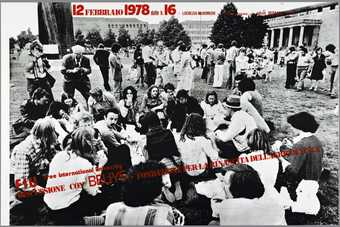
Joseph Beuys
Free International University. Discussion with Beuys - Fondazione per la Rinascita dell’Agricoltura
(1978)
ARTIST ROOMS Tate and National Galleries of Scotland
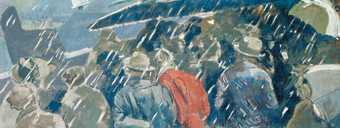
Walter Richard Sickert
Miss Earhart’s Arrival
(1932)
Tate
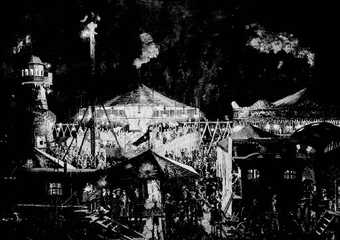
Allan Gwynne-Jones
A Fair by Night
(1938)
Tate
Crowded is political
Speakers’ Corner in London’s Hyde Park is the traditional place in London for public speeches and demonstrations. It used to draw huge crowds. These days it's more of a tourist attraction than a place for public debates.
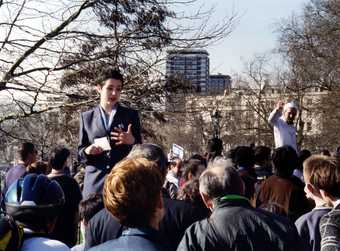
Carey Young
Everything You’ve Heard is Wrong
(1999)
Tate
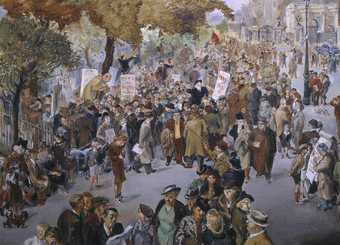
Grace Golden
Free Speech
(1940)
Tate
Politics and politicians can still draw crowds though. Political rallies can be places of celebration, though they can often represent the divisions in communities as well as unity within them.
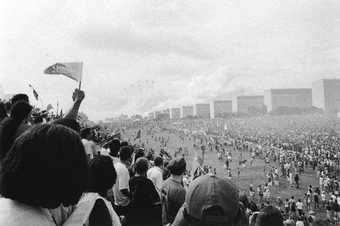
Mauro Restiffe
Empossamento #9
(2003)
Tate
Representing crowds can also make a political point. Michael Landy’s Scrapheap Services shows thousands of small cut-out human shapes scattered over the floor. The shapes fill up bins and a street sweeper's cart. Mannequins wearing a cleaning uniform are sweeping them up ready to be put into the 'Vulture' machine, an adapted wood shredder. The cleaning company’s motto is: 'We leave the scum with no place to hide'.
Landy was making a point about the politics of the time. He felt that many people in society were being discarded and ignored by the government and big business.
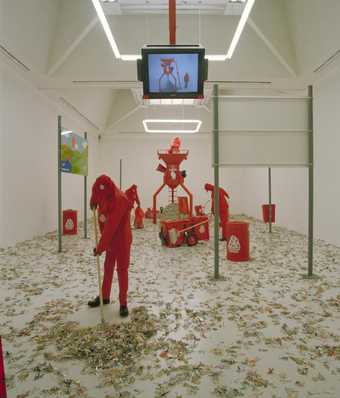
Michael Landy CBE RA
Scrapheap Services
(1995)
Tate
Crowded by conflict
Crowds can also gather when people are forced together by war, or they are escaping or preparing for conflict.
Crowded compositions and crowded marks
Sometimes the way the paint is applied in a painting can give you a sense of being crowded.
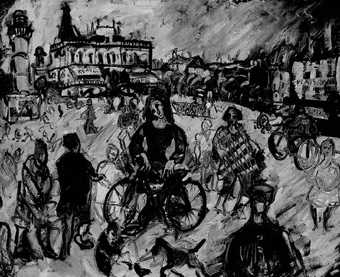
Anthony Gross
Place du Théâtre, Brive-la-Gaillarde
(1929)
Tate
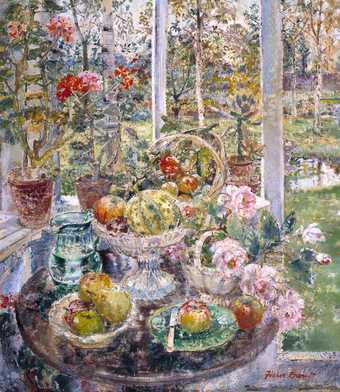
Margaret Fisher Prout
Home Grown
(1952)
Tate
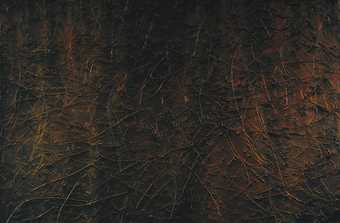
Nicholas May
Liminal 174
(1994)
Tate
What about how you arrange the elements in your art work? Artists can crop their layout tightly or run their image right to the very edges to give you a sense of being crowded.
Have a go!
Crowd your frame
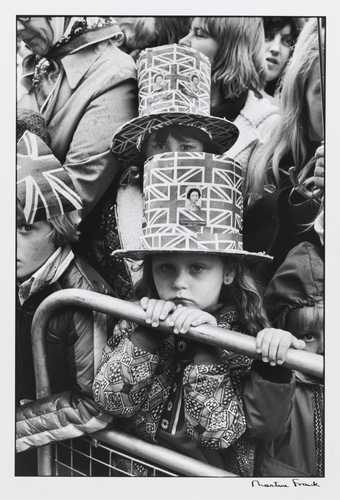
Martine Franck
Greenwich, London
(1977)
Tate
Photographer Martine Franck focused on the crowd at the celebrations for Queen Elizabeth II’s Silver Jubilee in Greenwich. The way she has cropped her image, figures and faces jostling right up to the edge, gives a real sense of what it’s like to be in a crowded crush.
- Find a place that is crowded with people. It could be a big event like Franck chose, or maybe a festival, concert or sports game has attracted a similar crowd. Maybe there’s a political event – a march or a rally taking place.
- Make sure you’re safe and it’s sensible for you to be taking pictures.
- Photograph some scenes of the crowd. Think how you can give a real sense of what it’s like to be there. Maybe you could focus on feet or the backs of heads. You might be inspired by umbrellas or arms in rain jackets. Try to fill your frame right to the edges.
- After the event print out your photos. (Don’t just do this on screen, because you can often find a better crop by playing with it physically.)
- Cut out some plain paper frames or strips longer than your printed images. Lay them on your images to make an even tighter frame. Does a tighter crop give an even better sense of the crowd?

